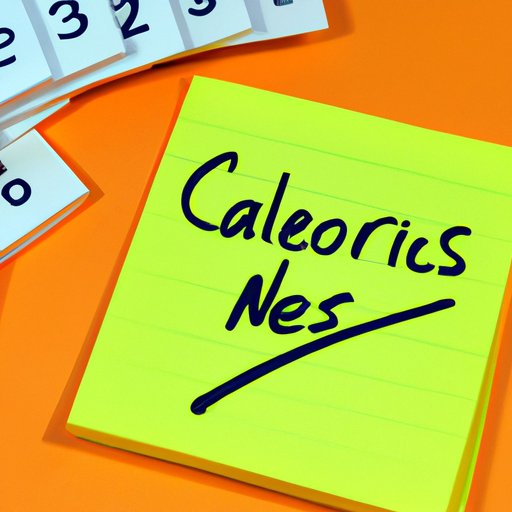I. Introduction
Are you looking for a safe and effective way to lose weight? If so, understanding calorie deficit is key! This article will teach you how to calculate a calorie deficit and offer tips for achieving your weight loss goals in a healthy and sustainable way.
II. Understanding Calorie Deficit
Calorie deficit occurs when you consume fewer calories than your body burns in a day. This creates an energy imbalance that leads to weight loss, as your body uses stored fat for fuel. To determine your calorie deficit, you need to know your daily calorie needs and track your food intake and physical activity.
III. Tracking Calorie Intake
Tracking calorie intake is essential for creating a calorie deficit. There are numerous apps and websites that can help you log your food and monitor your progress. Be sure to measure your portions accurately and choose whole foods that are nutrient-dense and filling.
To calculate your daily calorie needs, you can use an online calculator based on your age, gender, weight, height, and activity level. You can also consult a registered dietitian for personalized advice.
IV. Creating a Calorie Deficit
There are several ways to create a calorie deficit, including reducing food intake and increasing physical activity. While a combination of these methods is ideal, it’s important to find a balance that works for your body and your lifestyle.
Reducing food intake can involve portion control, eliminating processed foods, and choosing low-calorie alternatives. Increasing physical activity can involve walking, jogging, cycling, or strength training. It’s essential to find activities you enjoy and gradually increase the intensity and duration as you become more fit.
One potential pitfall of extreme calorie restriction is a slowed metabolism, which can make it harder to maintain weight loss in the long term. To minimize this risk, it’s important to fuel your body with nutritious and filling foods and avoid prolonging calorie deficits for extended periods.
V. Nutritious and Filling Meal Options
When following a calorie deficit plan, it’s important to choose meals and snacks that are both low in calories and nutrient-dense. Some filling and nutritious options include:
- Vegetable-packed salads with lean protein
- Fruit and yogurt parfaits
- Grilled chicken or fish with roasted vegetables
- Stir-fried vegetables with tofu or shrimp
- Low-calorie smoothies with spinach, berries, and protein powder
It’s important to balance macronutrients by including healthy fats, proteins, and carbohydrates in your meals. Whole foods such as fruits, vegetables, whole grains, and lean proteins are ideal for promoting fullness while providing essential nutrients.
VI. Tips for Sticking to a Calorie Deficit Plan
Sticking to a calorie deficit plan can be challenging, but it’s crucial for achieving your weight loss goals. Here are some practical tips for staying motivated and consistent:
- Plan ahead by prepping meals and snacks in advance
- Find an accountability partner, such as a friend or coach
- Set realistic and achievable goals
- Track your progress and celebrate small successes
- Enjoy treats in moderation and avoid feelings of deprivation
VII. Pitfalls and Risks of Calorie Deficit Diets
While calorie deficit diets can lead to weight loss, they can also pose potential risks to your health. Prolonged calorie restriction can lead to nutrient deficiencies, a slower metabolism, and negative impacts on mental health and wellbeing.
To mitigate these risks, it’s important to incorporate nutrient-dense foods and take breaks from calorie deficit diets. Consulting with a registered dietitian and increasing physical activity can also help promote overall health and wellness.
VIII. Conclusion
Calculating a calorie deficit is a powerful tool for achieving healthy and sustainable weight loss. By tracking your calorie intake and physical activity, creating a deficit, and making nutritious and filling meal choices, you can reach your goals and feel your best.
